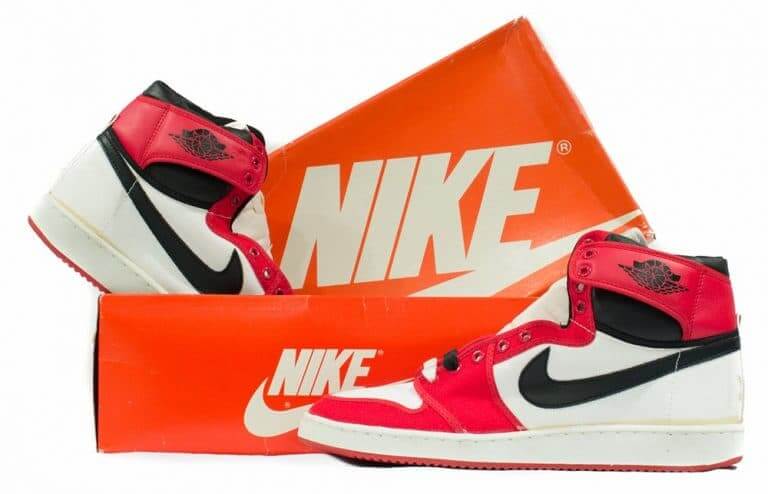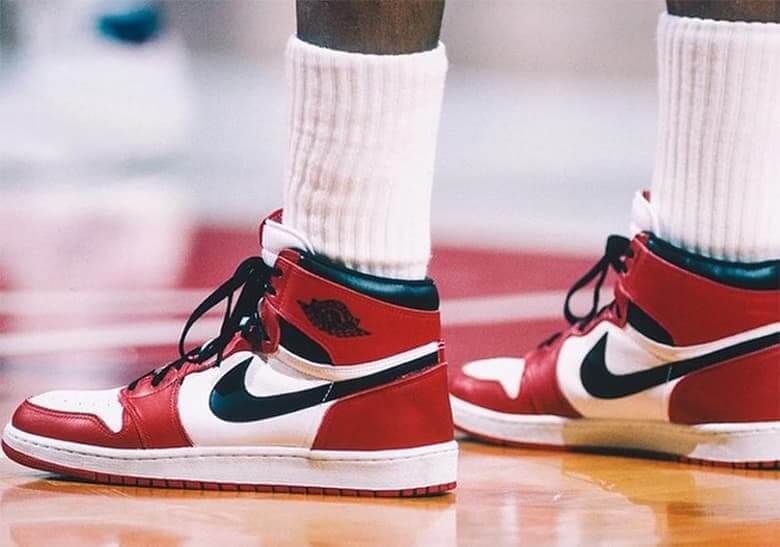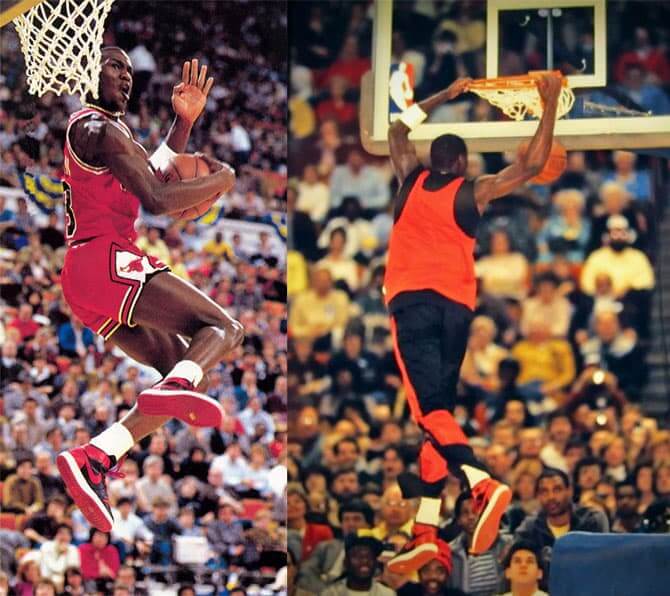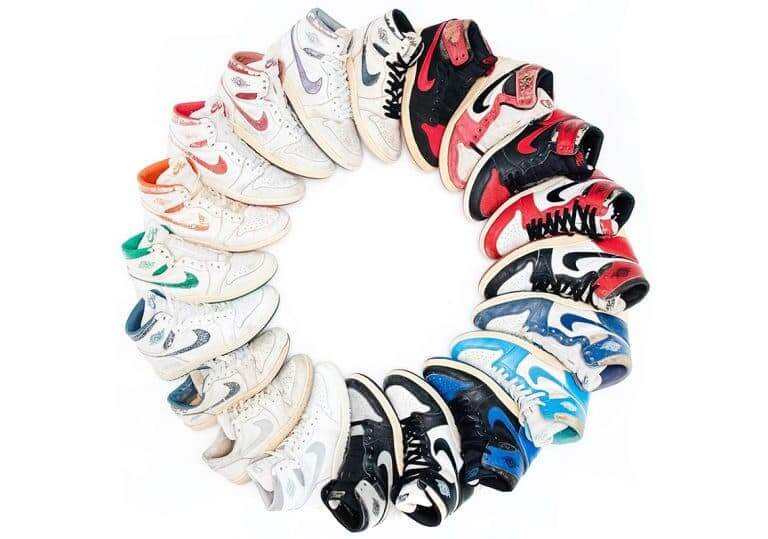Buying Guide
From Michael Jordan to the Masses: The Timeless Appeal of Air Jordan 1

The Air Jordan 1 has many identities. It is Michael Jordan’s first signature shoe, the sneaker that started sneaker collecting and resale, and the common ground between communities across the world. Just last year, Jordan Brand released over 250 variations of the AJ1, and supply still fell short of demand. It’s easy to see why. The design has been accepted globally as a street staple as well as the ultimate exemplification of nostalgia-driven current culture.
With a nearly 40-year-old history, there is a lot to know about the Jordan 1, and it can be overwhelming. A sneaker that is this deeply rooted in sports, music, art, dance, and fashion subcultures has enough history and meaning to fill books. But you don’t need to be a Jordan 1 historian to understand the basics before you purchase a pair. This is a crash course buyer’s guide on the shoe that started it all.

A Brief History
In 1984, Michael Jordan did not want to sign with Nike. He preferred the sneakers of other brands like adidas and Converse more. The only reason MJ even took a meeting with Nike was that his mother forced him to listen to what Nike was offering. To persuade Jordan to sign with the Swoosh, designer Peter Moore was tasked with making a shoe unlike anything they had done before.

Moore explained in an interview with SLAM Magazine that the Air Jordan 1 design was tailored to fit Jordan’s style of play after learning about his sneaker preferences, which in itself was a risk. MJ wasn’t even pro yet. Designing a shoe specifically catered to an untested draft prospect in 1984 was unheard of. Nevertheless, Moore went with it. He discovered that Jordan liked sneakers that were low to the ground (so that he could feel the court) and had worn-in comfort as soon as he took them out of the box. So with that in mind, Moore took extra cushioning out of the sole to improve court feel and constructed the upper in premium leather to provide as much comfort as possible.
The Air Jordan 1 also broke down barriers for sneaker colorways. Its paneled upper provided a canvas for large sections of color blocking, differentiating itself from the mostly-white sneakers that dominated the basketball shoe market in the 1980s. After many meetings and seeing the brand that Nike envisioned for him, Jordan did eventually sign with the brand. And back then, the shoe was simply called the Nike Air Jordan. The name we know it as today didn’t come until the model’s first retro in 1994.
Even though Michael Jordan debuted the Nike Air Jordan for the first time on the court toward the end of 1984, it wasn’t until the spring of 1985 that the signature model was available to the public. With the help of its iconic “Banned” TV commercials and Michael Jordan’s monumental rookie season, the Nike Air Jordan became the most popular basketball shoe on the market, sending Nike to new heights in the basketball world.
Air Jordan 1 Colorways
Between the spring of 1985 and fall of 1986, 20 Air Jordan 1 colorways released in high-top, low-top, and AJKO silhouettes. The first Jordan 1s to hit stores were the Bred, Chicago, and Black Toe colorways. The Bred colorway was the first to gain the attention of the masses on account of its fictitious ban from the NBA (the ban was little more than a Nike marketing tactic). But on the court, Michael Jordan mainly wore the Chicago and Black Toe Jordan 1s during his first two seasons on the Chicago Bulls. The only time he donned the Bred colorway was during the 1985 NBA Slam Dunk Contest.

Other OG Jordan 1 colorways that released were the UNC, Storm Blue, Royal, Shadow, White/Black, Neutral Grey, and “Metallic Pack” colorways. Each of these colorways has been re-issued in Retro form since their initial debut, but some not until fairly recently. Colorways that are well known for their OG status like the Shadow and Royal have been retro’d three times in the last 20 years. Lesser-known OG colorways like the Metallic Pack, Storm Blue, and Neutral Grey haven’t been retroed until the last five years, with the Jordan 1 High Neutral Grey getting its first retro just earlier this year.
In 1986, Nike released the Nike Air Jordan AJKO, which was a canvas iteration of the classic Air Jordan 1 and came with the sole of the Nike Vandal instead of the traditional Jordan 1 sole. It isn’t clear what “AJKO” stands for. Many assume that it stands for “Air Jordan Knock Out”, but that meaning it has never been confirmed by Nike.
How Do Jordan 1s Fit into Your Wardrobe?
The Air Jordan 1 originated as a performance basketball shoe, but now it is most popular for its street appeal. With an abundance of colorways, they can be worn on the job, on the street, and in some cases, at the United States Presidential Inauguration.

The Takeaway
The Jordan 1 is far and away the most popular sneaker model with thousands of pairs trading each and every day. Its enormous popularity is exceeded only by the magnitude of its significance: in terms of historical, cultural, and fiscal importance, the Jordan 1 has no rival. It is the sneaker that started it all and yet, even though it’s almost 40 years old, it continues to be at the vanguard of sneaker fashion.
The Air Jordan 1 is for everyone, and now that you’re armed with the history and data, you can feel confident entering the market and choosing the right Jordan 1 for your rotation. Happy shopping.
